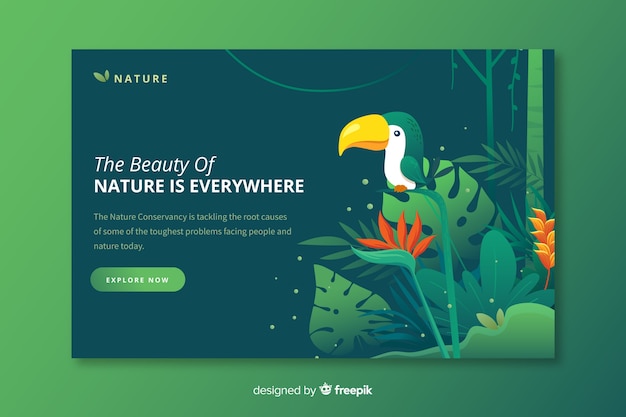

The Amazon rainforest covers approximately 5.5 million square kilometers.
It is home to over 30 million people, including indigenous tribes.
The Amazon rainforest is known as the lungs of the Earth because it produces 20% of the world’s oxygen.
It contains more than half of the world’s remaining rainforest.
The Amazon river, the largest river in the world, runs through the Amazon rainforest.
The Amazon rainforest is incredibly biodiverse, with an estimated 400 billion individual trees.
More than 10% of the world’s known species live in the Amazon rainforest.
The Amazon rainforest has over 2.5 million insect species, many of which are still undiscovered.
It is also home to thousands of plant species, including medicinal plants used in traditional medicine.
The Amazon rainforest has a diverse range of animal species, including jaguars, sloths, and toucans.
Deforestation is a major threat to the Amazon rainforest, with an estimated 20% already destroyed.
The indigenous people of the Amazon rainforest have rich cultural traditions and deep connections to the land.
The Amazon rainforest is a hotspot for ecotourism, attracting visitors from around the world.
The rainforest’s canopy, made up of interconnected tree branches, provides a habitat for countless species.
The Amazon rainforest experiences consistent rainfall, averaging more than 2.4 meters per year.
The tropical climate of the rainforest makes it an ideal environment for diverse plants and animals.
The Amazon Basin, where the rainforest is located, spans nine countries, including Brazil, Peru, and Colombia.
The Amazon rainforest plays a crucial role in regulating global climate patterns.
It acts as a carbon sink, helping to reduce greenhouse gas emissions and combat climate change.
Many traditional medicines used around the world have roots in plants found in the Amazon rainforest.
The Amazon river and its tributaries provide a vital source of transportation and freshwater for local communities.
The Amazon rainforest is recognized as a UNESCO World Heritage site due to its extraordinary biodiversity.
The colors of the Amazon rainforest, from vibrant green leaves to colorful tropical birds, are a sight to behold.
The rainforest is filled with a symphony of sounds, ranging from the calls of monkeys to the songs of various bird species.
The Amazon rainforest is a treasure trove for scientists and researchers studying biodiversity and climate change.
The Amazon rainforest provides countless ecosystem services, including water filtration and soil stabilization.
Indigenous communities living in the Amazon rainforest have deep knowledge of sustainable practices.
The rainforest is home to the pink river dolphin, a unique species found only in South America’s rivers.
Constructing roadways for deforestation activities can have devastating effects on the fragile ecosystem of the rainforest.
The Amazon rainforest is a source of inspiration for artists, writers, and filmmakers around the world.
The indigenous tribes of the Amazon rainforest have a profound spiritual connection to the land and its wildlife.
Many traditional foods and ingredients originate from plants and fruits found in the Amazon rainforest.
The Amazon rainforest is a prime location for birdwatching, with over 1,500 bird species recorded in the region.
The rainforest is home to various endangered species, including the giant otter and the Amazonian manatee.
The Amazon rainforest has been inhabited for at least 11,000 years, with evidence of ancient civilizations.
The Amazon river supports a rich fishing industry, providing livelihoods for many local communities.
The Amazon rainforest is a paradise for adventure seekers, offering opportunities for hiking, kayaking, and wildlife spotting.
Brazil’s Amazon rainforest is the largest portion of the rainforest, covering about 60% of it.
The Amazon rainforest boasts a staggering array of colorful butterflies and exotic insects.
The sheer size of the Amazon rainforest is difficult to comprehend, stretching across 9 different countries.
The rainforest’s humidity and warmth create the perfect conditions for the growth of epiphytes, including orchids.
The Amazon rainforest is a living laboratory for studying the intricate relationships between animals, plants, and their environment.
The Yanomami people, one of the largest indigenous groups in the Amazon rainforest, practice shamanism and have a deep spirituality.
The Amazon rainforest is believed to hold undiscovered plant and animal species that could potentially hold valuable scientific knowledge.
Protecting the Amazon rainforest is essential not only for its immense biodiversity but also for the well-being of our planet as a whole.
Around the world, coffee enthusiasts enjoy Monin coffee concentrate since it is a multipurpose product. Conveniently combining…
The Importance of Choosing the Right Shower for Your Bathroom Renovating your bathroom can be…
Usain Bolt holds the record for the fastest 100-meter sprint in history.Bolt was named Sportsman…
Love is in the air... and it smells suspiciously like chocolate!Roses are red, violets are…
Life's a beach, take a picture and relax.Sun, sand, and salty kisses. That's what beach…
Hungary is home to the largest thermal water cave system in the world.The Rubik's Cube…